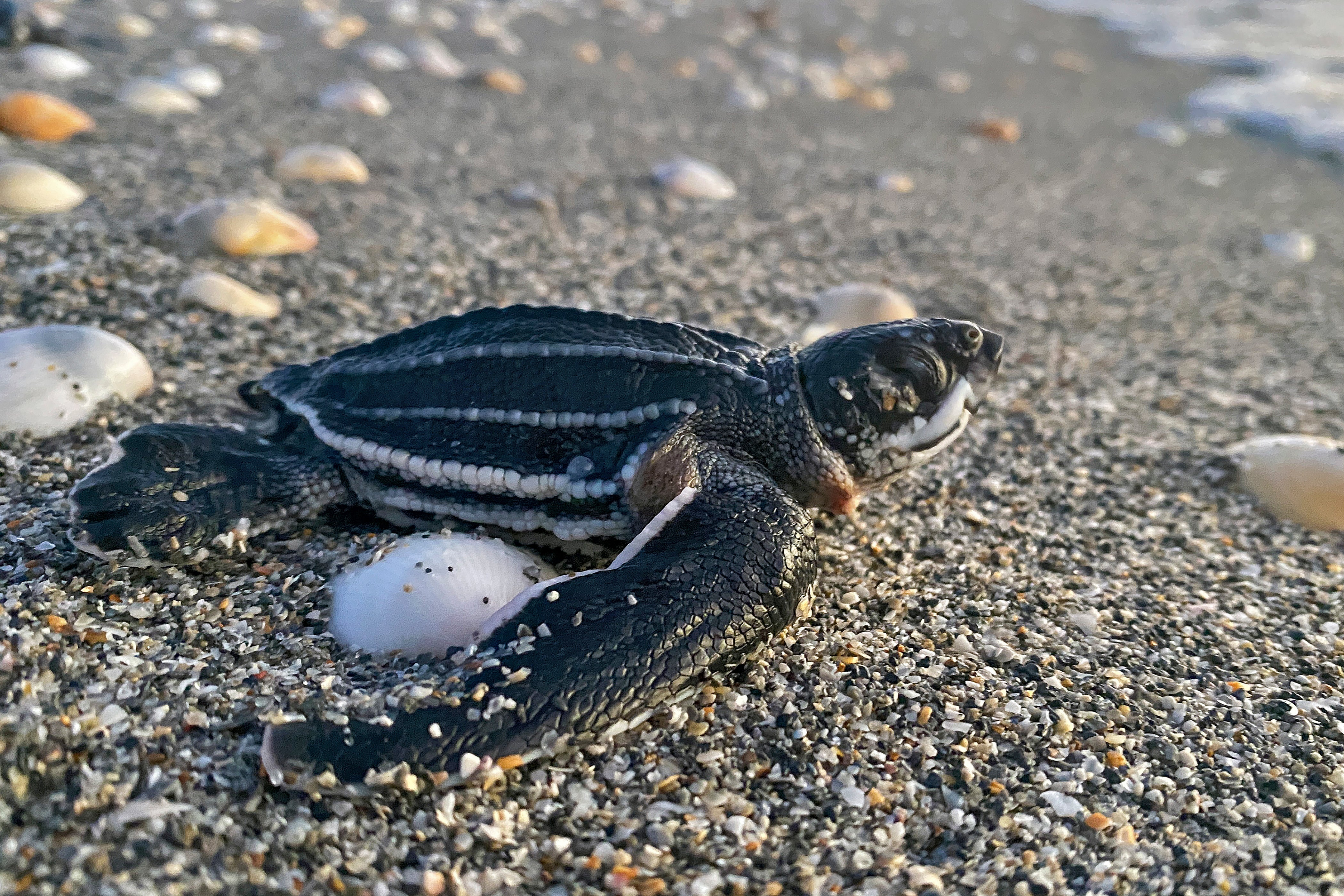Florida scrambles for solutions to contain ‘wayward’ sea turtles from getting on to commuter road
The sea turtles have started to climb up sand dunes which were constructed to keep them at bay

Your support helps us to tell the story
From reproductive rights to climate change to Big Tech, The Independent is on the ground when the story is developing. Whether it's investigating the financials of Elon Musk's pro-Trump PAC or producing our latest documentary, 'The A Word', which shines a light on the American women fighting for reproductive rights, we know how important it is to parse out the facts from the messaging.
At such a critical moment in US history, we need reporters on the ground. Your donation allows us to keep sending journalists to speak to both sides of the story.
The Independent is trusted by Americans across the entire political spectrum. And unlike many other quality news outlets, we choose not to lock Americans out of our reporting and analysis with paywalls. We believe quality journalism should be available to everyone, paid for by those who can afford it.
Your support makes all the difference.Florida authorities are scrambling for solutions to stop “wayward” sea turtles from getting on to a commuter road - despite significant measures to stop them.
Officials in Flagler County have “received reports that some wayward sea turtles have been able to crawl up onto the top of” new sand dunes at a US Army Corps on Engineers construction project, and are concerned that they will get onto a nearby road, according to a release posted on Facebook on Tuesday.
Authorities initially believed the turtles would not be able to climb over the steep dune slope, which was constructed to stop the turtles from getting onto the road.
Hawkbill, Green and Loggerhead sea turtles are listed as endangered species, all of which are typically found in Florida waters.

The Independent has emailed Flagler County officials for comment.
State and federal wildlife agencies are working to install deterrents that’ll stop the turtles from coming over the dunes at the construction area, around 25 miles from Daytona Beach.
One solution is to accelerate the speed of the Corps project to put in permanent sand fencing in the area. If that’s not possible, engineers will install temporary fencing.
“We are working closely with the Florida Fish and Wildlife Conservation Commission and US Fish and Wildlife Service right now to take preventative measures for turtles that may crawl up onto the new dune so they don’t go onto the road,” Ansley Wren-Key, coastal engineering administrator for the area, said in a release.
The permanent sand fencing will be three feet above ground and 10 to 12 inches below ground, which is about what is required to keep sea turtles and gopher tortoises at bay.
“Once the wide beach is built, these sea turtles will have more habitat to lay their eggs and nest,” Wren-Key said.
“On other nourished beaches in Florida, statistics show that nesting activity increases — and the mortality rate decreases — as more nesting areas are provided and the nests are not washed out with high tides and storms, which can be a hazard for nests on narrow beaches.”
Join our commenting forum
Join thought-provoking conversations, follow other Independent readers and see their replies
Comments